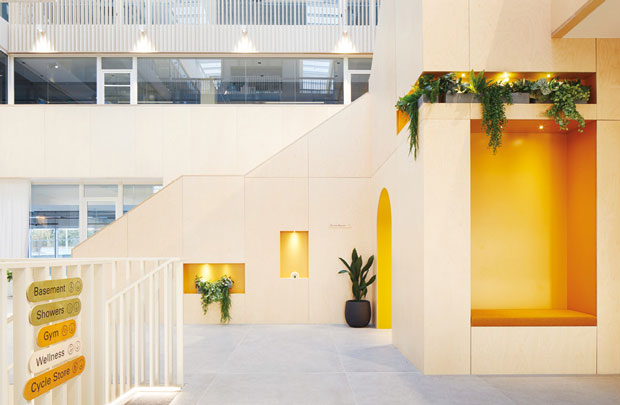ESG IS HERE
With this year’s awards being notable for focusing on the societal impact of great office buildings, there are a number of ways the winners and those shortlisted put ESG (Environmental, Social and Governance) at the heart of their projects.
“The role of the office has undergone a transformation in recent years,” says Kauntze, “just as the notion of ‘office work’ continues to be transformed in line with new technologies and working patterns. This has had a significant impact on the industry. The goal is no longer simply to create buildings, but to provide a space that can enhance workplace culture and give back to the surrounding community.
“The ESG Award was introduced in 2023 to acknowledge the importance of this movement in the sector. The 2023 winner, the HERE Building, is an excellent example of the innovative approaches being brought forward to transform existing buildings into thriving hubs for a community of businesses.”
The HERE Building, Thames Valley Park and winner of the ESG Award ‘exemplifies the power of data-led design’ according to the judges which Burton describes as an exemplar example of a retrofit project by a developer that focussed on the occupiers needs. This included the use of sustainable materials, which resulted in significantly reduced carbon and energy consumption. The office also features new meeting pods, cafes, outdoor spaces, high class gyms, training and nutritional programmes all designed to support health and wellbeing.
Says Kauntze: “It was particularly exciting to see how sustainability and wellbeing came to the fore in all of this year’s winning projects, showing that ESG principles are becoming determining factors across all categories of excellence.”
With ESG now a core part of the criteria for all the awards, Burton explains that: “Key aspects of the award-winning projects included defining the ESG goals and desired outcomes the teams wanted to achieve at the start, measuring these and ensuing they are met on completion.
“Some projects used assessment methods such at embodied carbon and operational energy measurements, as well as assessments such as BREEAM and WELL. Some circular economy principles were also applied.”
Green travel plans, EV charging, promoting cycling and walking and providing public transport links were also important features. This extended to local sourcing of materials, the use of local labour, the support of apprentices and those young people learning STEM (Science, technology, engineering, and mathematics) subjects.
Says Burton: “Spaces were designed for all, using diversity and inclusion specialists and community engagement included providing facilities, spaces for meeting and events, local employment and education.
“Health and wellbeing, including air quality, acoustics, day lighting, biophilia, facilities including cafes, gyms, wellbeing facilities are all important factors as are accreditations such as WELL, Fitwell or AirRated.”





